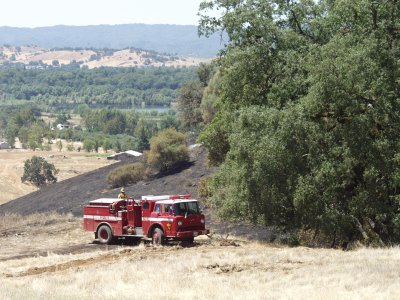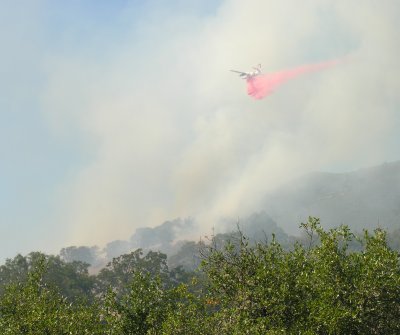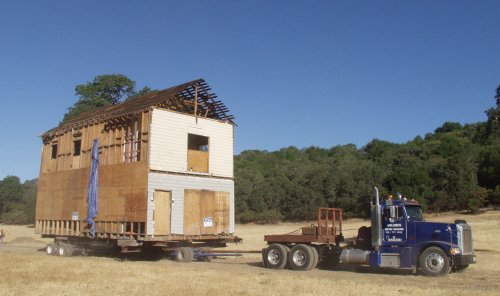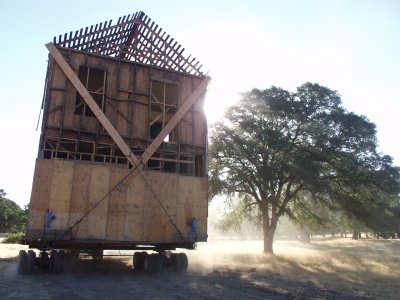- Elizabeth Larson
- Posted On
Water district plans emergency conservation measures
LOWER LAKE – With its wells running low, the Lower Lake County Water Works board held a public hearing Monday night to discuss an urgency ordinance to impose emergency conservation restrictions.
The meeting, which lasted more than two hours in Lower Lake's Brick Hall, was at times contentious, as district customers voiced their frustration over issues ranging from what they perceived as the district's failure to plan for the future to wondering why they hadn't heard about the issue sooner.
More than 30 district customers attended, along with Supervisor Ed Robey and County Counsel Anita Grant, who also acts as counsel for the district.
District Board Chair Frank Haas explained that the meeting was held to discuss the four-page conservation ordinance.
In the form handed out Monday, the ordinance suggests prohibiting all landscape and outdoor water usage, putting fines in place for overuse, cutting off service in cases where overuse continues, preventing new service connections and cutting off customers from outside of the district.
Haas, however, conceded that the ordinance was a “boiler plate,” and would be changed before the board accepts it, likely at a yet-to-be-scheduled meeting in early August.
District General Manager Al Tubbs explained that due to less rain this past year, the wells are down. The district's pumps are going 24 hours a day, but still can't fill the district's pumps, he said.
Tubbs said if the district's customers can't start conserving by 15 to 20 percent of the 560,000 gallons the district pumps each day, he's concerned that the district will be in desperate straights.
The situation became critical in early June. At that time Tubbs went to the board to notify them that the district's pumps were having to run much longer because of lower water levels, as Lake County News previously reported.
The board decided to shut down a standpipe on Morgan Valley Road that 12 Morgan Valley families – who are outside of the district's bounds – use to supply potable water to their homes because of their own low or dry wells.
After the families appealed to the district, the board held a special meeting where it decided to compromise. It cut off commercial trucks using the potable water to spray down construction sites and allowed the Morgan Valley families to continue using the pipe through July 31.
Tubbs admitted Monday, “The standpipe is a very, very minuscule amount of water.”
The consensus from district customers Monday was that the families who use the standpipe, despite being technically outside of the district, are customers, and should not be cut off. But Grant said that the district's ability to sell water to out-of-district customers is defined by California water law.
“State law speaks particularly to the idea of users outside the district,” she said.
The district must define its water needs and then, if there is a surplus, the standpipe use for outside district users can continue.
But Tubbs did not have any hard numbers of what would amount to a surplus. The board did say, however, that the standpipe users would continue to be supplied for at least another month.
Grant said the board couldn't discuss the out-of-district users formally because the item wasn't on the meeting's agenda.
She also surprised some audience members by saying that, in an emergency, the district could cut off water to certain customers if it deemed it necessary. “The ramifications for these things can be quite dire.”
Tubbs handed out information about the level of water use over the last four years.
On a daily basis in July 2003, the district pumped 393,335 gallons of water, Tubbs reported. This past month, it pumped 584,912 gallons on a daily basis, an increase of nearly 50 percent. Overall the district serves close to 900 households.
Tubbs neither explained the reason for the increase in usage nor provided data on new hookups to account for the increase.
When questioned about plans for the future, Tubbs said the district is in the process of creating a rate structure to penalize overuse, and that he's going to meet with the Konocti water district in August to ask for an emergency system tie-in.
He said he also would like to put in a $500,000 surface water treatment system so they could purchase surface water from Cache Creek from Yolo County, but that he has thus far been unsuccessful in obtaining grant funding. Robey said he would try to help Tubbs find the money.
Several audience members suggested they would be willing to pay more money now against a loan for the treatment system in order to address the district's water shortage.
Robey told the district board that he believed the ordinance stipulations against outdoor water use and accompanying penalties would be hard to enforce. He did suggest adding surcharges for overuse and putting a temporary stop to hookups to the system, which would demonstrate to the Konocti water district that they were serious about finding solutions.
He added that water conservation doesn't need to be painful. “It's possible to conserve water without suffering very much.”
C.J. LeBrun said she was upset that the district was only now telling customers about its water problems. Haas said the board itself only found out in June about the problems, when Tubbs notified board members.
By the end of the meeting, frustration and tempers had subsided, with customers asking for guidance on conservation.
Carl Cunningham, one of the Morgan Valley out-of-district customers, summed up the district's situation this way: “It's not an emergency, it's a matter of growth.”
He said he and other customers want to help the district improve, and are looking for ways to help in ways that include conservation and finding agencies to support system upgrades and expansion.
Another Morgan Valley resident, Roger Lipman, added “The reality is, the whole district has to conserve.”
The district board moved to hold over approval of the ordinance until it has time to update it with input from the meeting.
E-mail Elizabeth Larson at This email address is being protected from spambots. You need JavaScript enabled to view it..
{mos_sb_discuss:2}
















